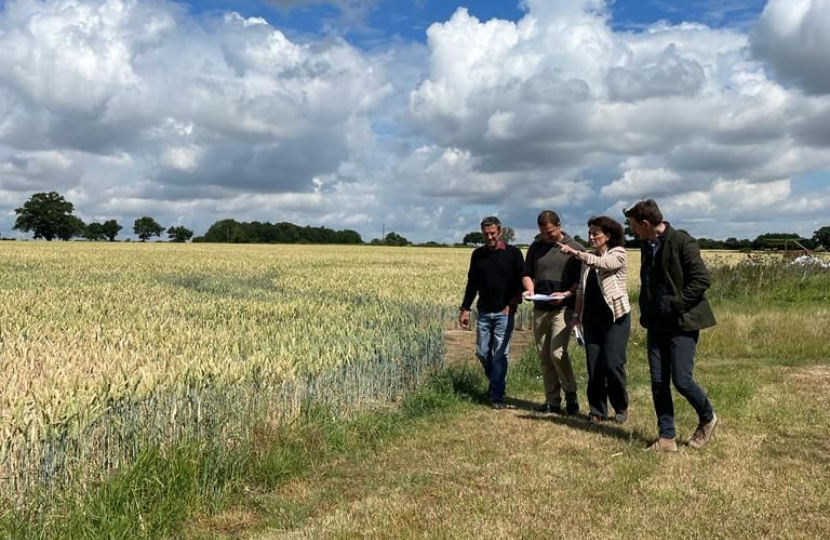Bury St Edmunds is positioned at the centre of East Anglia and is the jewel in the crown of Suffolk. It is important we protect the traditions and uniqueness of country life. I regularly visit our excellent rural centres, farmers and agri-businesses and am committed to bringing people closer to nature.
I have supported the Queen’s Commonwealth Canopy and regularly meet with the NFU, Suffolk Wildlife Trust and other local organisations, including working with Bury Water Meadows Group to help them create a new green space and river path.
Since I was elected as an MP, I have campaigned to improved water quality and paucity in our region, something that becomes ever more relevant year on year, especially as temperatures rise and rainfall diminishes. The Lark, is one of only about 250 chalk rivers in the world - they are globally rare habitats, and they support, when healthy a unique aquatic ecosystem. It is vital we ensure the river Lark is revived and I will work alongside Anglian Water, the Environment Agency, Norfolk Rivers Trust, Water Resources and others to restore it to the best state possible as well as pushing for protected status.
During these challenging times, with increased pressure on energy availability and pricing, it is right we think to the future to adapt to more renewable energy sources while ensuring energy security. The East of England is a net contributor to Her Majesty’s Treasury, grows the food that ends up on peoples’ plates and generates the electricity that powers our nation. Three things we are rightly proud and for which we expect to have our views heard, which is why I was concerned to see National Grid’s East Anglia GREEN pylon proposals to introduce an expansive pylon network. This expansive network would impose on great swathes of farmland, having a significant impact on our rural landscape. As we build our domestic energy capacity, we must consider all opportunities available to us. I have advocated for sub-sea electricity transmissions - as already in use off the coast of East Anglia - to protect Areas of Outstanding Natural Beauty in our region. I understand that underground cabling is more costly in the short term, but by putting a grid under the sea and encouraging companies to co-operate, costs will be very significantly reduced.


